10 Stories Where Reality Turned Out to Be More Entertaining Than Any Sitcom

80% of what’s deep inside the world’s oceans remains hidden to this day! That’s because the ocean covers 70 percent of the planet’s surface, and we only have access to a small portion of that. We can clearly see around three miles deep down inside the ocean.
So, it’s no surprise that our most recent discoveries when it comes to wildlife come from the ocean. I mean, there’s a lot to explore. Like this new shark species called the Genie’s dogfish. Or the longest animal ever found — a 154-foot-long jellyfish, which we just stumbled upon earlier this year in Australia.
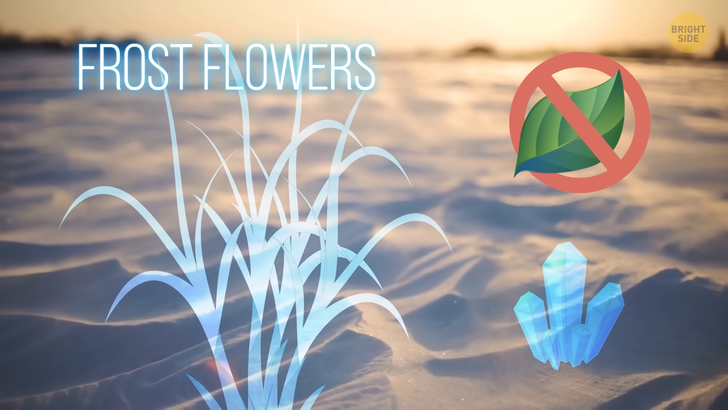
Somewhere in the Arctic and Antarctic seas, a strange phenomenon appears, confusing people, to say the least. It’s called frost flowers, but they’re not plants at all, merely ice crystals. Frost grows on the long-stemmed plants that manage to break the thin layer on the surface of young sea ice. Frost flowers aren’t just made of water, though. They have a variety of microorganisms within, making them a small temporary ecosystem.
Turns out we don’t have volcanoes just on the visible surface of the Earth. Submarine volcanoes are just as disruptive to their surrounding wildlife. If the data we have so far is correct, the ocean has the most productive volcanic systems on Earth, most of them being on average 8,500 feet below the surface of the water.
A Maelstrom, a powerful and at times dangerous whirlpool, is a source of nightmares for seafarers to this day. What sets a Maelstrom apart from other whirlpools is that it comes in an extraordinary size and force. It’s so powerful it can put even larger ships in a lot of trouble. One of the most famous of them is called Naruto, and it’s located near Awaji Island. Its tides move in and out from 8 to 12 miles per hour twice each day, making it one of the fastest in the world.
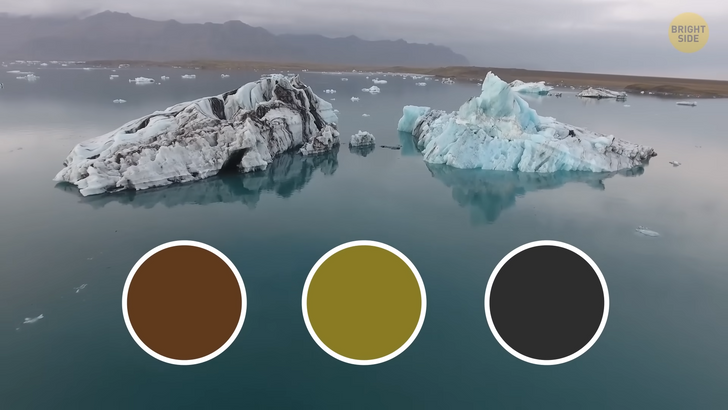
The sinking of the Titanic is the historical event that made icebergs famous, am I right? Well, sometimes, these icebergs even come with colored stripes. They can be brown, black, green, yellow, and blue. Obviously, they’re called striped icebergs, and they get their colors from various natural reasons. Like the blue ones, for example, which turn up when the ice melts and freezes back up very quickly. If there are green stripes in the iceberg, it probably means it has some algae stuck somewhere in there. Other more earth-toned colors, like brown, yellow, or black, have other things to blame, like sediments the seawater picks up before freezing.
Back in March 2019, scientists stumbled upon one of the most baffling phenomena ever to be found in the sea. During the exploration of one of the underwater volcanoes, they noticed what looked like a small lake, which was upside-down! It was at least 6,500 feet below sea level. If you think that doesn’t make any sense, well, that’s because it’s not real. Turns out it was nothing more than an optical illusion generated by the liquid in these upside-down pools. It gets up to 320 F degrees hot, and it’s made of some harsh chemicals, like sulfur and metals, which makes the illusion possible.
The world’s largest waterfall is also safely tucked underwater. It’s located beneath the Denmark Strait, a portion of water that stands between Iceland and Greenland. If you suddenly grow fish gills, dive in there, and manage to comfortably breathe underwater, you’ll be able to see a series of waterfalls that begin at 2,000 feet under the surface but then drop down to a depth of 10,000 feet.
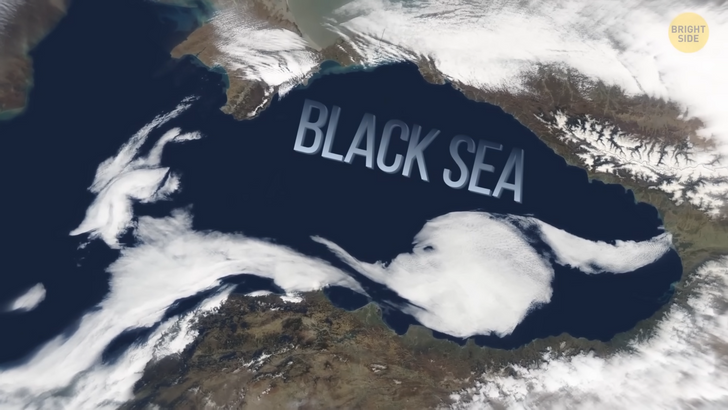
In 2011, Swedish treasure hunters discovered an object on the bottom of the Baltic Sea that they described as “strange” and “mysterious.” It’s oval-shaped with unusual stair formations. The head of the team who made the discovery supposed it must have been constructed tens of thousands of years ago, even before the Ice Age, and could have been a part of the underwater city of Atlantis. Experts who analyzed the object believe it to be a regular glacial deposit or some other natural formation, but they still don’t know for sure.
They don’t call it the Black Sea for nothing! Located at the southeastern extremity of Europe, it even has ’sea smoke,’ which is basically steam coming out of the surface of the sea. This happens because of the humidity of the oceanic water, which neutralizes the cooler wind blowing on the water’s surface, creating this vapor-like phenomenon.
If you ever check out the ocean surface during sunset and sunrise, you might get lucky enough to see green flashes. You will have to pay attention, though, because it merely lasts for a couple of seconds. They happen because of the natural prismatic effect of the atmosphere of the Earth. During sunsets and sunrises, light emerging from the Sun gets diverged into multiple colors, a process that looks like there’s a green flash emitted by the water.
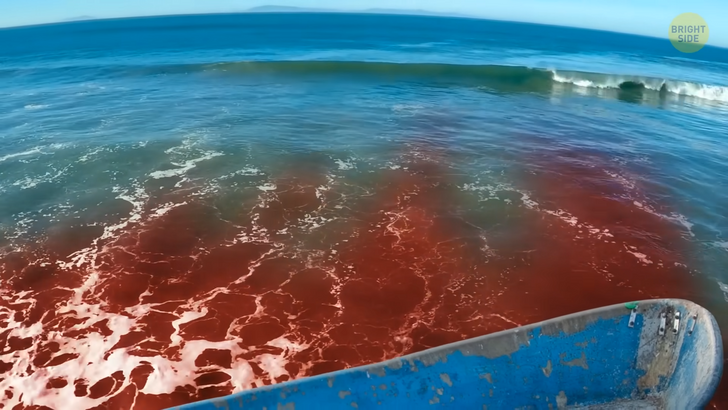
Red tides do happen a lot of times, and although there’s no need to panic when you see one of those, you still must be careful. The technical term for this phenomenon is ’algal blooming.’ It happens when there is rapid growth or blooming of algae in the waters of the ocean. Because of the chemicals these algae contain, they may be a trouble for birds, animals, and even humans. So don’t be so quick to jump into the waters should you ever experience it.
Octopuses and squid have a special trait that sets them apart from other sea creatures: they have three hearts. Valentine’s Day must be very special for them. It doesn’t necessarily make them more romantic, but they do need these 3 hearts to function properly. They have one major heart that helps with circulation all-around their bodies and two branchial hearts that are responsible for pumping near their gills. With three hearts and eight arms, when the octopus hugs you, you’ll know she’s very sincere.
Based on a study published in 2013, dolphins have names for each other! Particularly bottlenose dolphins, which have their own special whistles, just like human names. Not only do they develop this type of whistle to present themselves to other dolphins, but they can also learn other such “names” so they can better communicate with each other.
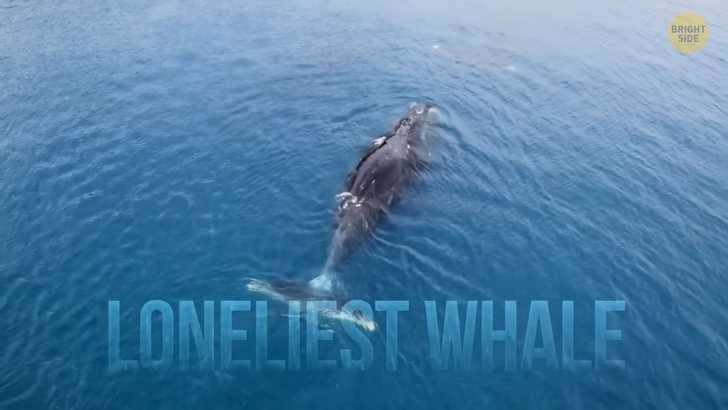
In the depths of the Pacific Ocean, there’s a mysterious singing whale, which scientists have yet to fully understand. They call it “the loneliest whale” because it emits sounds at a much higher pitch than any other blue whale we’ve ever encountered. No one has ever seen it, though, so researchers believe its strange tune may be keeping it from actually finding a partner. Aw...
Standard blue whales have their own particular quirk: their hearts are more than five feet long! They are also about four feet wide and can weigh more than 400 pounds! Just to give you a better idea, your heart is roughly the size of your fist. So that would be smaller. Not that we aren’t a bit intimidated by sea creatures already, but just so you know, sharks can sometimes grow thousands of teeth. And not just one or two thousand. Up to 30,000 teeth over their lifetime, to be precise. Yeah, I wouldn’t want to see a shark’s dentist bill. Something to chew on.
Scientists have yet to identify a creature on Earth that can actually live forever, but it looks like this is about to change. A tiny jellyfish that’s even smaller than the nail on your pinky appears to be the living embodiment of Benjamin Button! That’s because it has the ability to go back to a previous developing stage whenever it’s in danger or extremely hungry and out of food. It’s no surprise they earned themselves the nickname “the immortal jellyfish.” We’ve known about this species for hundreds of years, but it took us until the 1990s to discover their unique characteristics. We’re yet to be sure how it’s able to produce cells that regress and regrow, but they could hold a secret that might help advances in medicine for both animals and humans.











